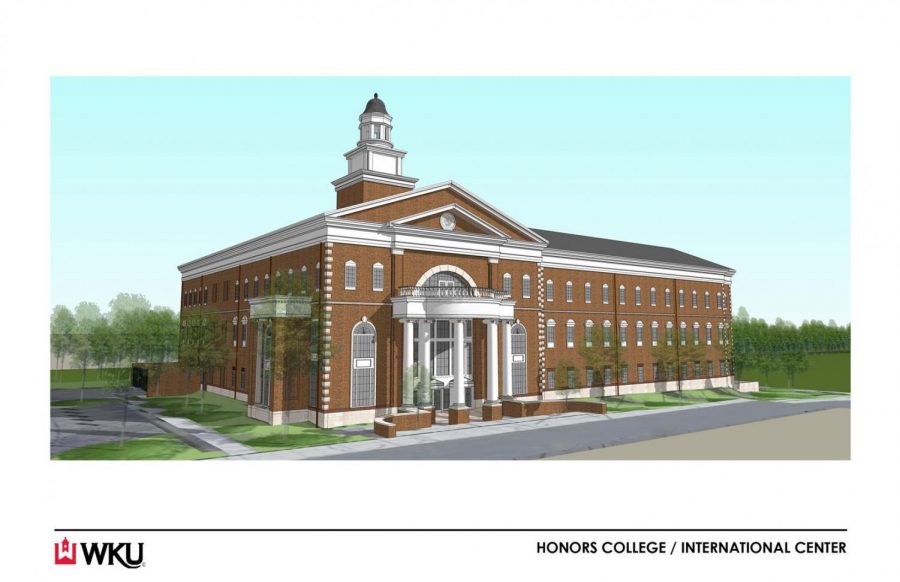Honors College and International Center set for August completion
June 9, 2015
While most WKU students are enjoying the summer break, construction crews are working seven days a week to finish the roughly 15 projects WKU is currently working on.
One of the “capital projects” (major projects undertaken by the university, does not include renovations/upkeep on existing buildings) includes the new 70,000 square-foot, $22 million Honors College building, which is expected to be completed in August in time for the fall semester.
While the building has been named the new Honors College and International Center, project manager for capital construction Kerra Ogden said there are more WKU groups involved than the two that the building is named after.
“My main objective now is to keep all of the clients happy and communicating on the same page,” Ogden said.
Ogden said this has been one of the harder projects she has managed, citing the difficulties in getting all the involved clients to agree with each other as the most challenging part.
The clients she is referring to are all of the WKU groups that will call the new building home:
- The Honors College
- Three branches of the WKU international office—enrollment, studies, and programs
- The Chinese Flagship program
- The Kentucky Institute for International Study (KIIS)
- The Office of Study Abroad and Global Learning (SAGL)
- The WKU ESLI office (English as a Second Language)
- The Office for Scholarship Development
- The WKU Navitas office
- The WKU Restaurant and Catering Group (Aramark)
Rumblings of the project began as early as 2007, Ogden said. In 2008-2009 a selection process was undertaken to find a place for the new building.
Several locations were surveyed on campus as to where to place the new building, including the current Honors College Building on the corner of State Street and College Heights Blvd.
The location that was ultimately selected—on Normal Street directly across from the Northeast Hall and Southwest Hall dormitories, displaced a fraternity house and a sorority house. The two Greek organizations have since relocated—the fraternity to College Street and the Sorority to Chestnut Street.
Once the location was found, Ogden’s next task was compiling two lists from each of the clients moving into the new building; one list containing features that each client had to have, and a second list containing features that each client would like to have.
The reasoning behind the selection of this plot of land had several variables according to Ogden.
“Where the building is placed now caps off centennial mall, is a straight path to Diddle Arena, and also is in close proximity to Minton Hall,” Ogden said.
The same architecture firm that designed the new building has also designed Ransdell Hall, Van Meter Hall, Music Hall, the Alumni Building, and Downing Student Union.
The familiarity in architecture across campus is something that Ogden said was done on purpose.
“We want the campus to feel like it was planned,” Ogden said. “Not haphazardly built.”
The budget of $22 million that was afforded to the project is a dollar figure that Ogden is confident will not be exceeded.
“It is a $22 million project, and generally we stay right at or below the budgeted number,” Ogden said. “We have things that each client must have, and once those requests are filled we use the rest of the funds to accommodate (the client’s) other requests… the ones that weren’t mandatory. Going above $22 million is not an option.”
The project’s completion date is set for August in time for the start of the fall semester. If anything, the project could have been finished earlier, but harsh weather conditions this past winter proved a hindrance on production.
“We are a little behind schedule because of the rain and snow this (past) winter,” Ogden said. “The building wasn’t dried in yet by the time the weather hit… there is lots of things you can’t do to a building until it has been dried in, so that set us back a little bit.”
Besides the weather creating hold-ups in production, there was another nature-related hindrance on the project. A natural spring was discovered running under the plot of land selected, so crews had to reroute the spring around the building prior to construction.













